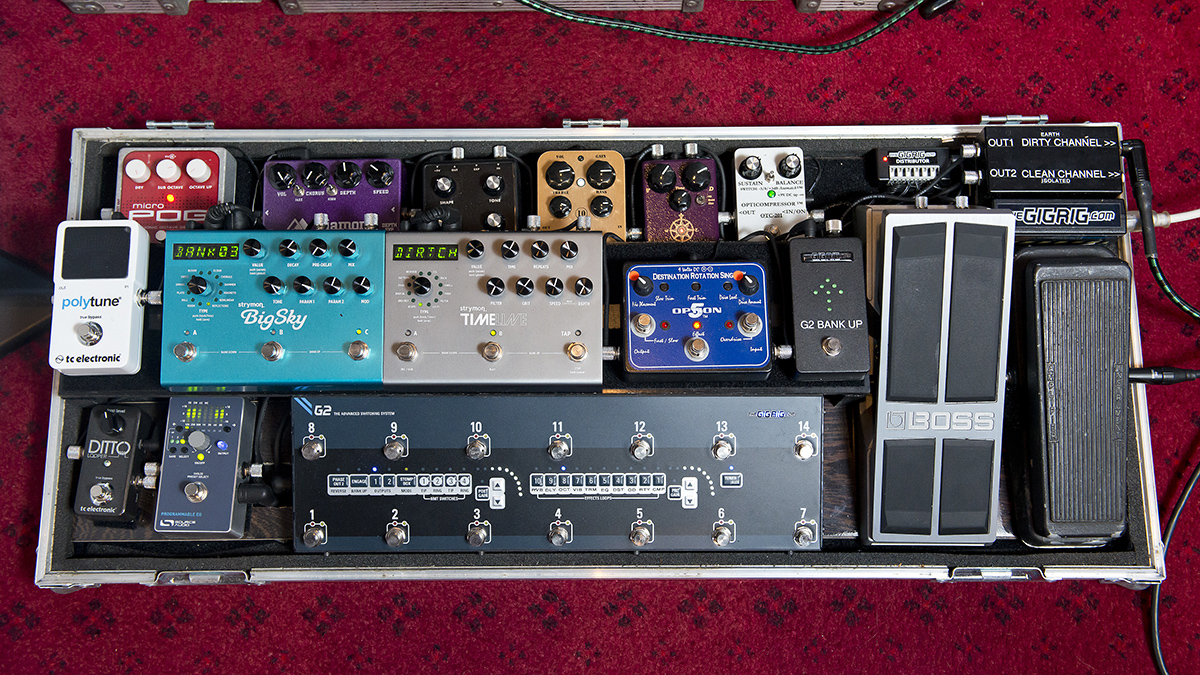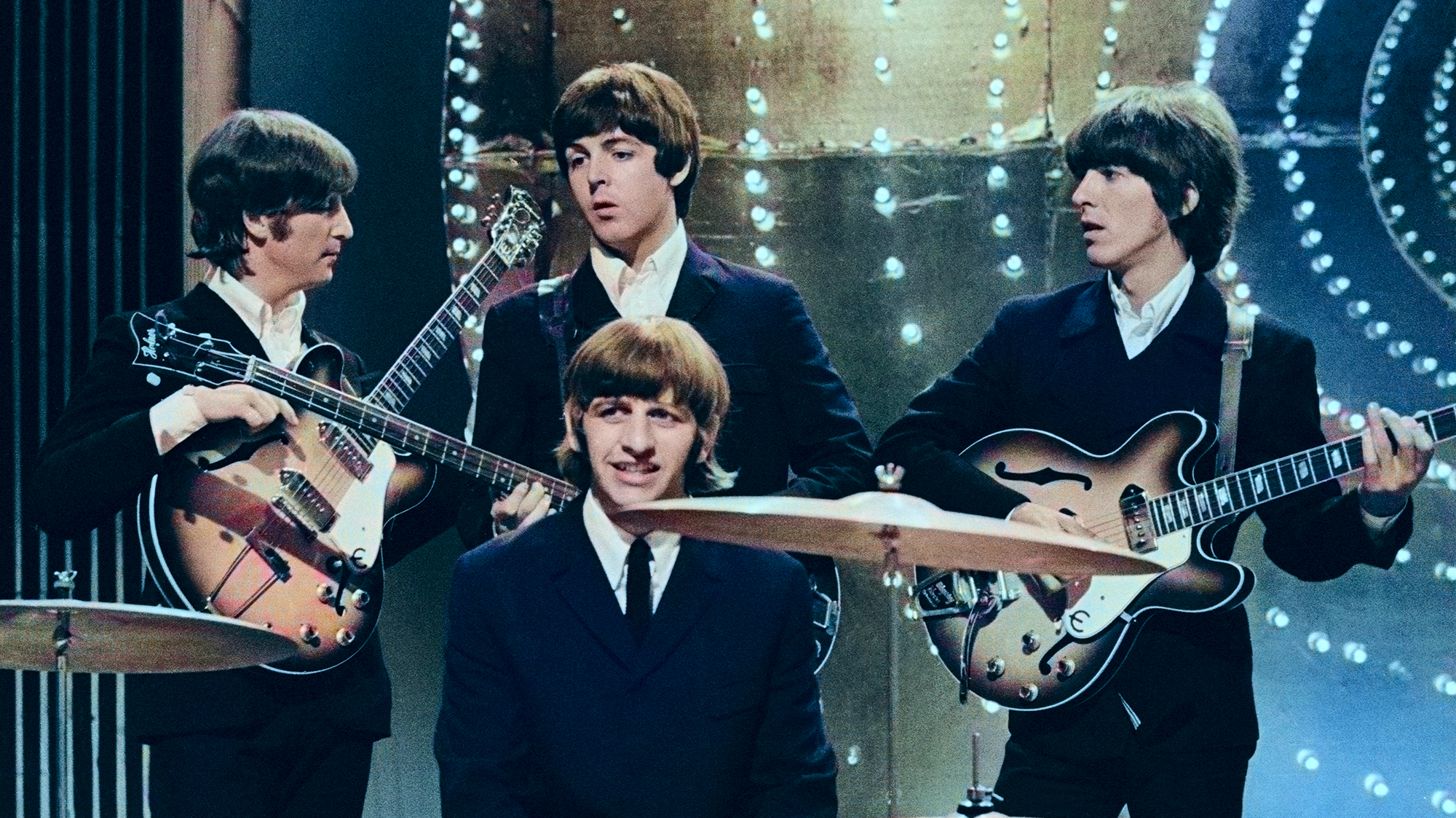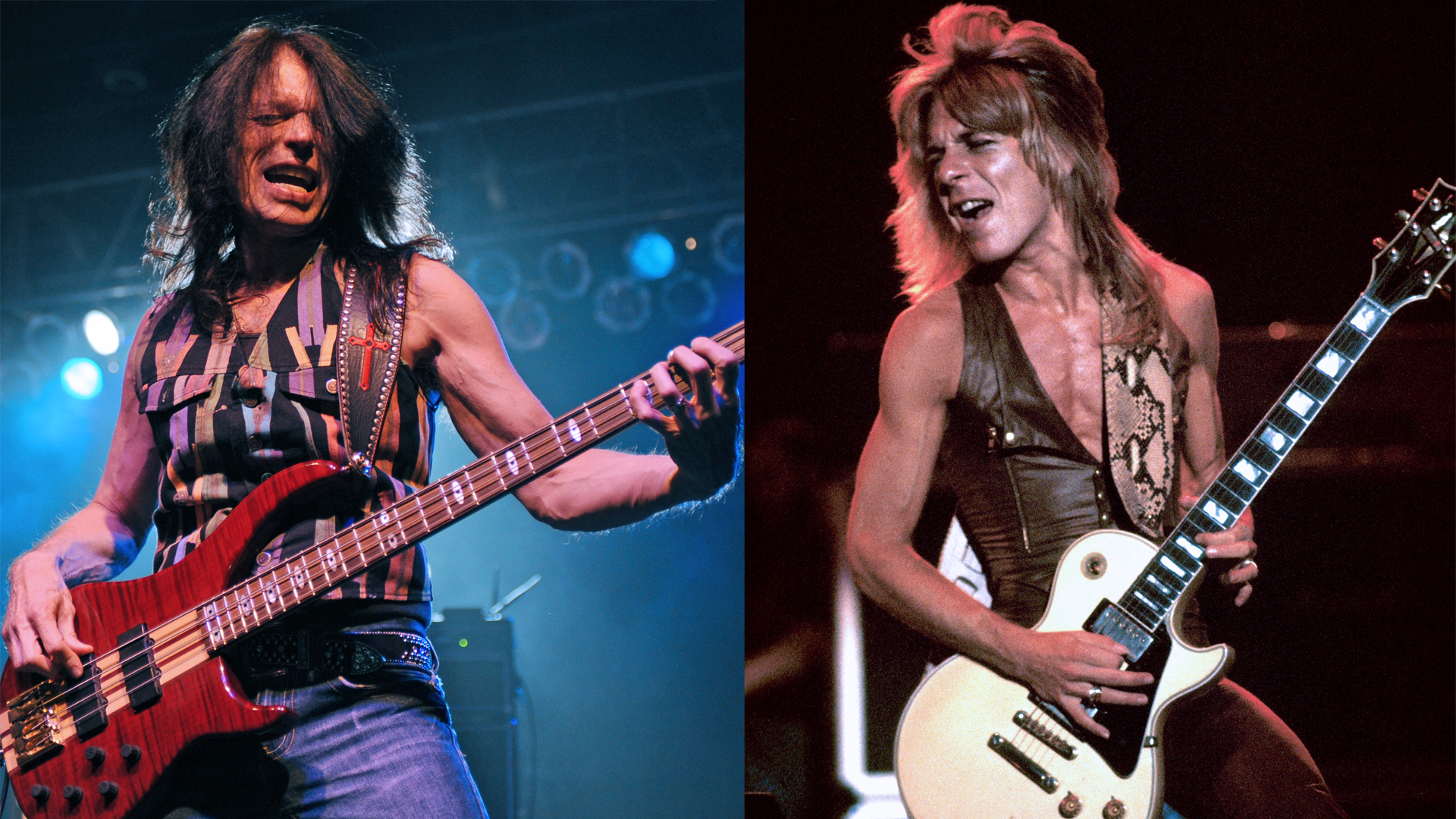A Guide to Guitar Pedal Order
Get your guitar pedals in line with our expert tips


Most guitarists tend to place their reverb at the end of their pedalboard – but not all of them. Both in the studio and onstage, Porcupine Tree’s Steven Wilson puts his reverb towards the start of his chain, before his drives and fuzzes. This leads to distorted waves of reverb that can best be described as dramatic squalling.
The order in which guitar pedals should be placed on your pedalboard is a hotly contested topic, with most players having a strong opinion on what should go where.
That said, a couple of rules are pretty much universal. For example, pitch shifters, volume pedals and wahs tend to go first, with drive pedals coming after. Generally speaking, effects that add harmonic content work well towards the start of a chain, while those that manipulate frequencies in the signal – i.e. modulation pedals – are better placed towards the end. However, even these conventions aren’t set in stone, and for every ‘correct’ placement there’s an outside-the-box alternative that some player somewhere will have made work for their sound.
In this guide, we’ll look at the different pedal types and offer some advice on how you might want to position them on your 'board.
1. Compression
You can place your compression right at the start of your chain, or at the very end.
Placing it at the beginning will even-out the input signal, allowing for increased sustain, a ‘tighter’ tone and more harmonic information. The key is to dial-in the attack so that the initial transient of the guitar still hits but the decay is sustained. Some players only use a compressor for solos or tapped figures. Others use one as an ‘always-on’ effect, and this is why models such as the Origin Cali76 are so sought-after.
Placing compression at the end of your chain will give you a more consistent level across all of your pedals. However, be aware that this can smooth out reverb trails, which can take some of the life out of your sound.

2. Boost pedals
Your boost pedals should feature towards the front of your ’board, as they can be used to fatten up overdrives and fuzzes.
Get The Pick Newsletter
All the latest guitar news, interviews, lessons, reviews, deals and more, direct to your inbox!
In much the same way that you’d use a clean boost to ‘kick’ a tube amp into saturation, overdrives and fuzzes are, at their heart, just amplification circuits. This means they can be made to saturate the signal by hitting them hard enough that they run out of headroom – as with an amp.
Since many pedals also use diodes for additional clipping, this will involve some trial and error. Stacking pedals isn’t an exact art, but the end results tend to be much richer than just using a single drive pedal.
3. Overdrive pedals
Overdrive should come early in your chain.
Although many fuzz pedals are more intolerant to positioning in the chain, overdrive pedals are often placed before them. Sometimes, this is because a transparent overdrive is being used as a boost, which is then stacked with the fuzz.
Another reason that stacking drives and fuzzes is popular is EQ. Overdrives and distortions often have better EQ, whether it’s a single-knob affair (as found on the Tube Screamer) or a three-band, amp-style EQ (Friedman, Wampler and Marshall pedals).
Some people do the reverse – compressing a fuzz pedal further by running it into a Tube Screamer is a common trick. This works not only because of the way the Tube Screamer clips the signal, but also because of its EQ profile. For example, the EHX Big Muff Pi notches the signal at around 1kHz, while the Tube Screamer boosts at a similar frequency. Some players prefer the thicker and somewhat flatter EQ profile that combining the two creates.

4. Fuzz pedals
Fuzz should come at the very beginning of a chain, or at least very early in it.
Fuzz pedals often expect the impedance of a guitar pickup – particularly classic ones such as the Fuzz Face. This means that if you want to get the best out of them, or have them interact with your guitar’s volume knob, then you’ll need to place them first in your signal chain.
Even some more modern, erratic pedals have a similar quality, but for a different reason. The feedback loops that characterise pedals like the ZVEX Fuzz Factory, the Caroline Wave Cannon and the DBA Supersonic Fuzz Gun won’t function as intended if placed after a buffered pedal.
However, for rhythm guitarists, interaction with the instrument is less important and a thicker sound is generally more prized. This is why you often see fuzzes placed after boosts and drives – because stacking the drive block creates a richer tone for rhythm playing.
If you’re using a fuzz for lead parts, then consider moving it up the signal chain. You might also want a boost after it to give you a volume jump on tap – handy for when you need to switch from rhythm to lead parts.
5. Delay pedals
Delay pedals are often found in the middle or towards the end of a chain. In 99% of cases, they come after the drive block.
However, as with reverb pedals, delays can be put in front of your drive block for dramatic, runaway sounds.
6. Reverb pedals
Reverb usually comes at the end of a chain, unless you have modulation pedals after it.
Where you place a reverb pedal is likely to be impacted by what type of reverb you’re using. If it’s a modern, more sound-effect-style reverb, then it can go at one of several points in a chain. For example, a reverse reverb can sound great in front of a delay.
If, on the other hand, it’s more of a classic room- or hall-style sound, then it will benefit from being later on in the chain. This will result in previous effects being ‘glued together’ by it, just as audio sources in a practice space or live-music venue are.

7. Modulation pedals
Modulation pedals can be placed at various points in the chain. Chorus in front of delays or reverbs, for example, can lead to interesting results.
For the most part, though, modulation pedals work best at the very end of the chain, where they add either subtle or dramatic coloration. Flangers and phasers benefit from coming after an overdrive or fuzz. Overdrives and fuzzes complicate the waveform, adding extra overtone – this gives modulation effects more interesting harmonic content to chew on as they emphasise frequencies and resonances in the signal.
For an example of just how dramatic this can sound, think of EVH's main riff in ‘Ain’t Talkin’ Bout Love’.
8. Wah pedals
Generally, wah pedals are placed early on in the signal chain, in front of the drive block.
If you use a fuzz, placing your wah before it will turn it into a vocal filter. Place the wah after, and it’s like being the conductor of tuned white noise – a popular sound among those who play psychedelic rock.
But there's an even more radical option for wah positioning. The wah pedal is effectively a sweepable bandpass filter, so there's an argument for putting it with the modulation block.
It's also possible to use a wah to sweep slowly through cycles, almost like a manual phaser. This usage is uncommon outside of the studio, but is incredibly powerful when placed after a delay.
Alex Lynham is a gear obsessive who's been collecting and building modern and vintage equipment since he got his first Saturday job. Besides reviewing countless pedals for Total Guitar, he's written guides on how to build your first pedal, how to build a tube amp from a kit, and briefly went viral when he released a glitch delay pedal, the Atom Smasher.
"The only thing missing is the noise from the tape loop." We review the Strymon EC-1 Single Head dTape Echo, a convincing take on a very special vintage tube Echoplex
"BigSky MX will be replacing the BigSky as my go-to reverb pedal. I’ve heard nothing that covers all the bases with such pristine and detailed audio quality." We crowned the Strymon BigSky MX the champ of multi-reverb pedals










